SpaceX Starship megarocket launches on 2nd-ever test flight, explodes in 'rapid unscheduled disassembly' (video)
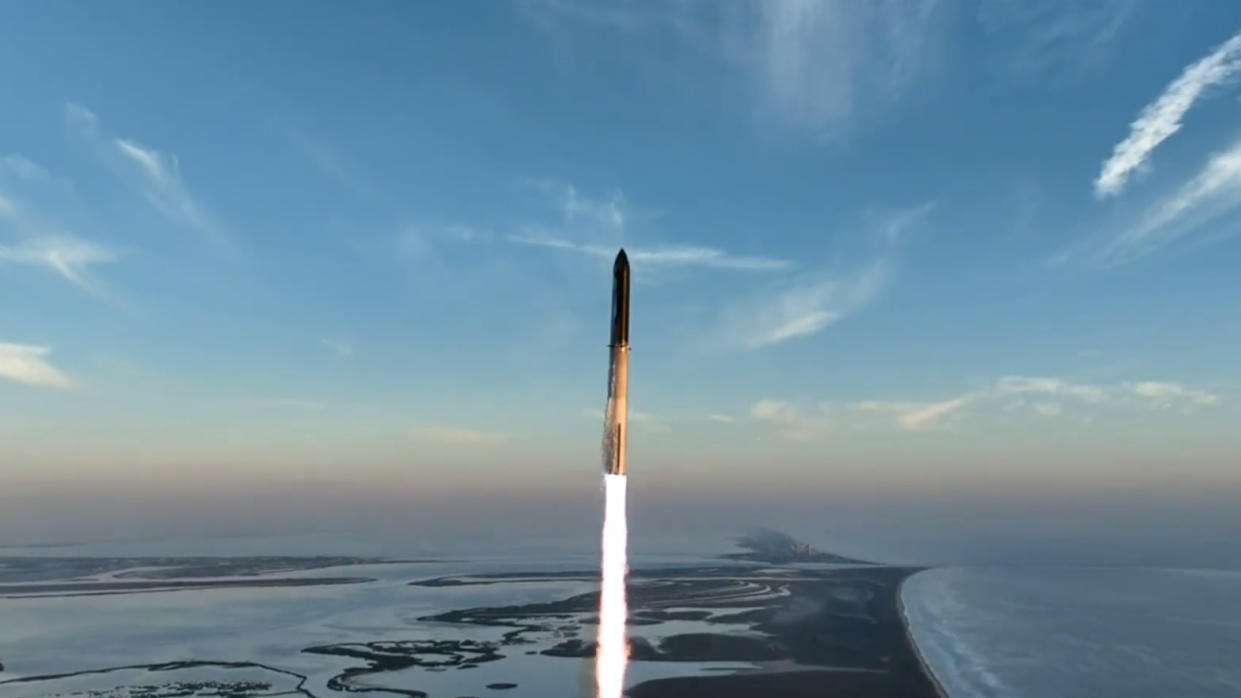
SOUTH PADRE ISLAND, Texas — SpaceX's giant Starship has met another explosive end.
SpaceX's next-generation megarocket — the largest ever built — launched on its second-ever test flight today (Nov. 18), a highly anticipated jaunt that took the giant vehicle to space for the first time, but it didn't last long. Shortly after stage separation, the rocket's massive Super Heavy booster exploded, with the Starship upper-stage vehicle itself detonating before reaching its target altitude in what SpaceX called a "rapid unscheduled disassembly."
"What we do believe right now is that the automated flight termination system on second stage appears to have triggered very late in the burn, as we were headed downrange out over the Gulf of Mexico," said John Insprucker, SpaceX's principal integration engineer, during a live webcast today.
The massive Starship and Super Heavy booster took off today at about 8 a.m. EDT (1300 GMT; 7 a.m. local Texas time) from SpaceX's Starbase test and manufacturing facility in Boca Chica.
Just north of Boca Chica, here on South Padre Island, spectators gathered by the hundreds this morning to watch the launch. They cheered as the orange light from Starship's 33 first-stage Raptor engines blazed through its plume of exhaust as the huge rocket began its climb. Standing nearly 400 feet (122 meters) tall, Starship is the largest and most powerful rocket ever built, and it can be seen for miles when stacked and standing at the Starbase launch pad.
Related: See stunning photos and video of Starship's 2nd launch
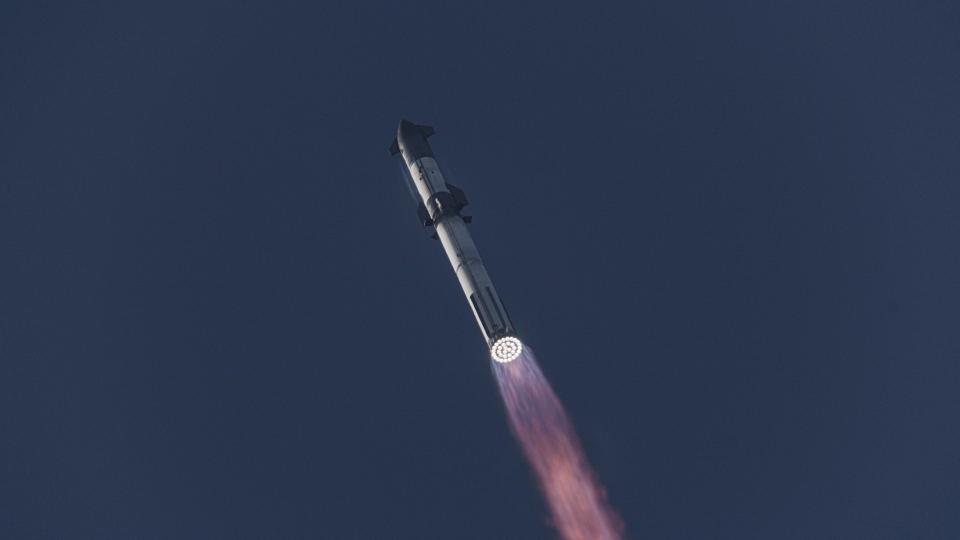

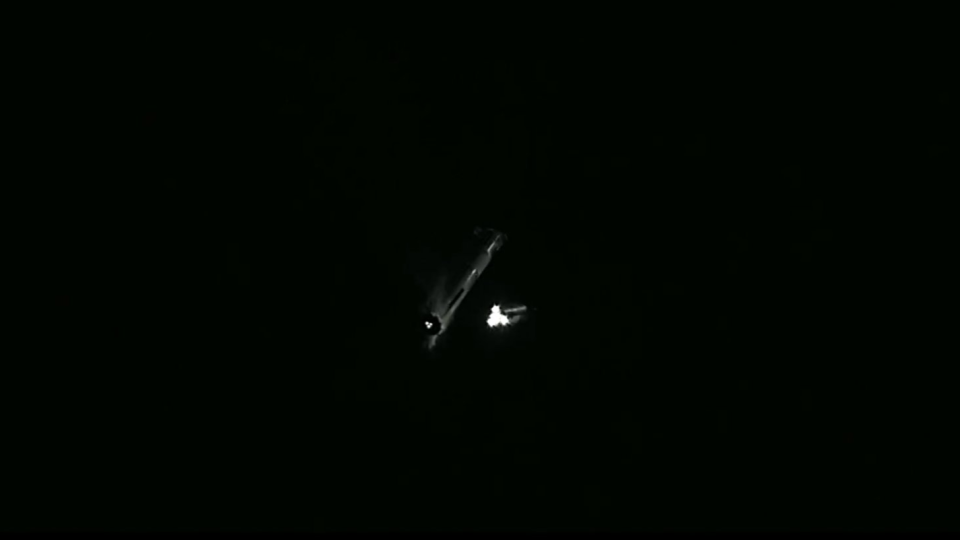
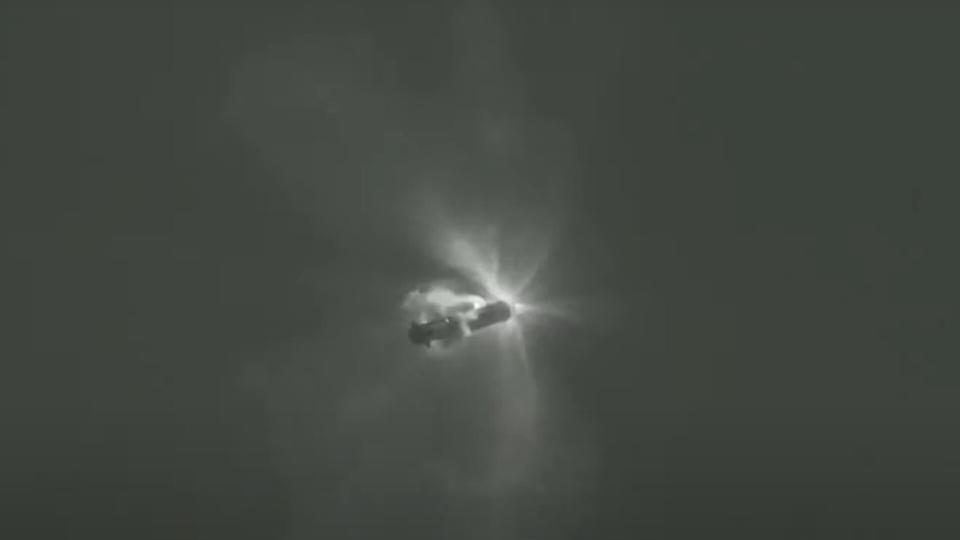

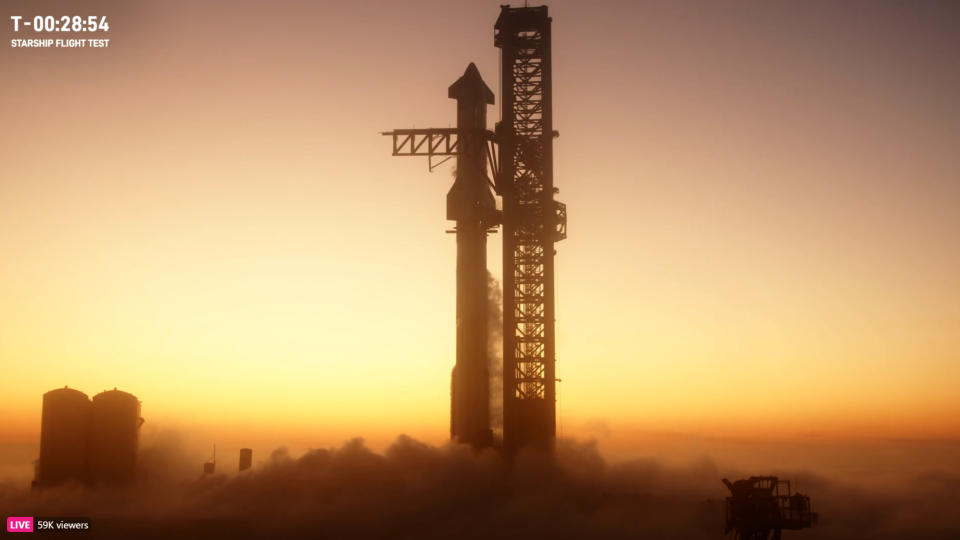
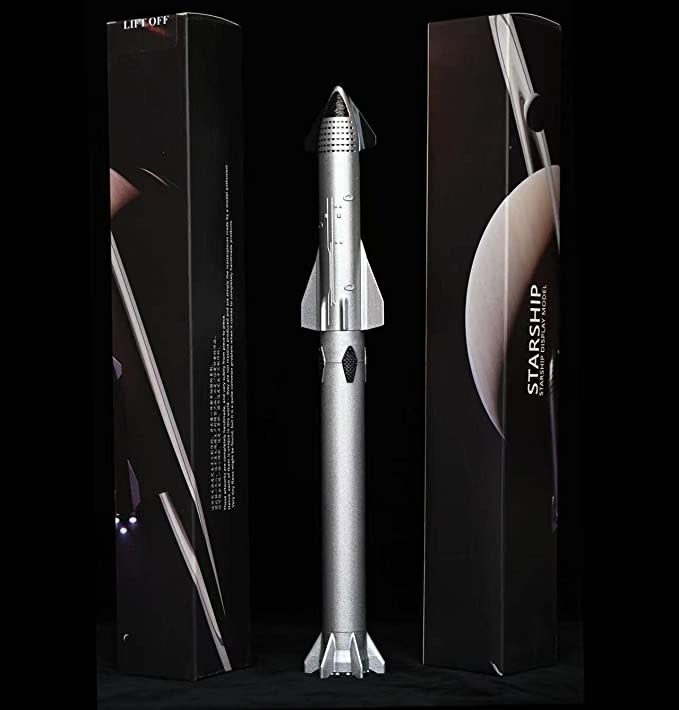
Starship Die Cast Rocket Model Now $69.99 on Amazon.
If you can't see SpaceX's Starship in person, you can score a model of your own. Standing at 13.77 inches (35 cm), this is a 1:375 ratio of SpaceX's Starship as a desktop model. The materials here are alloy steel and it weighs just 225g.
Note: Stock is low so you'll have to act quickly to get this. View Deal
This was the second test flight for the fully integrated Starship, which consists of the Super Heavy first-stage booster and Starship upper-stage spacecraft. The first liftoff, which occurred on April 20 of this year, did not go as well as this one did. April's Starship launch ended with a self-destruct command about four minutes into flight, turning the tumbling rocket into a smoldering fireball.
One reason for April's unscheduled disassembly was the failure of Starship's two stages to separate. To prevent a recurrence of this problem on the second flight, SpaceX decided to go with a new strategy: "hot staging," in which the upper stage's engines begin firing before Starship and Super Heavy have fully separated. This concept isn't new; it has been used on vehicles like the Titan II from NASA's Gemini program in the 1960s and Russia's venerable Soyuz rocket, which is still in operation.
Starship's stage separation occurred on time today, about 2 minutes and 41 seconds after liftoff, and appeared to go smoothly, but the Super Heavy booster exploded shortly afterward.
"We're going to take that data and improve the hot staging sequence and probably improve the hardware itself for the next flight," SpaceX quality engineering manager Kate Tice said during the live webcast. SpaceX had hoped to soft-land the Super Heavy in the Gulf of Mexico to test reentry and landing processes.
Related: NASA chief congratulates SpaceX on Starship's 2nd launch test

The Starship upper stage continued flying for a short time after stage separation. SpaceX had hoped to establish signal acquisition with the spacecraft at its target altitude of about 150 miles (250 kilometers). But telemetry from the vehicle was lost about eight minutes after liftoff, near the end of its own burn after stage separation, with SpaceX mission managers, including CEO and founder Elon Musk, eagerly awaiting updates in a live webcast.
The spacecraft was never expected to reach full orbit around Earth, instead flying on a suborbital trajectory to splash down in the Pacific Ocean off the coast of Hawaii. "We're not targeting orbit today; we're targeting almost orbit," said Siva Bharadvaj, a SpaceX operations engineer, adding that the goal was to "get to a thrust profile similar to what we would need for orbit, but also energy level that the ship would need to dissipate for reentry."
It's worth nothing that Starship's second test mission did fly longer and higher than its first test flight on April 20, which failed at stage separation and exploded. So SpaceX still considered the second try a success. The last telemetry signal from today's launch pegged Starship's altitude at 148 kilometers, or 91 miles, well above the 62-mile (100 km) boundary of space.
"Honestly, it's such an incredibly successful day even though we did have a rapid unscheduled disassembly of both the Super Heavy booster and the Ship," Tice said. "That's great. We got so much data, and that will all help us to improve for our next flight."
SpaceX and the crowds of spectators here at South Padre Island weren't the only ones cheering on Starship today. A lot is riding on the success of SpaceX's new rocket, including the timeline for NASA's return of astronauts to the surface of the moon.
For example, the space agency chose Starship as the lunar lander for its Artemis 3 mission, which is scheduled to carry astronauts to the moon in late 2025 or early 2026. And SpaceX's plans for the huge rocket extend well beyond the moon.
Related: Facts about NASA's Artemis program
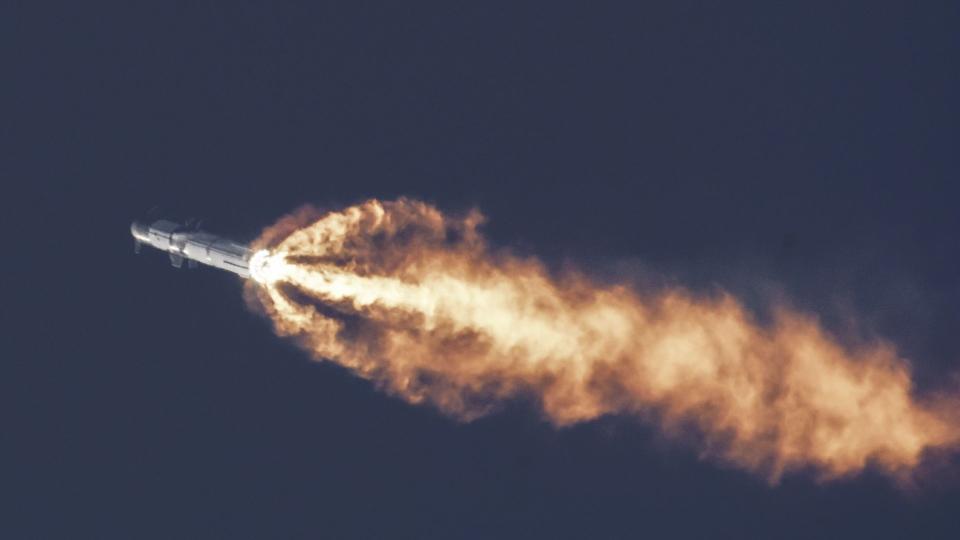
RELATED STORIES:
— Starship and Super Heavy: SpaceX's Mars transportation system
— SpaceX: Facts about Elon Musk's private spaceflight company
— SpaceX delays second Starship test launch to Nov. 18 to replace rocket part
When Musk first introduced the Starship concept, he called it the Mars Colonial Transporter. When fleshing out details of the system at the International Astronautical Congress in September 2016, he announced a new name: the Interplanetary Transport System.
As these former monikers show, the new spacecraft is designed to help make humanity an interplanetary species — a long-held dream of Musk's. Though the timeline seems to continually shift from year to year, the billionaire entrepreneur envisions Starship as the vehicle that will allow humanity to establish a sustainable, permanent presence off Earth.
The breakthrough that could make that happen is Starship's reusability. The new system stands as the evolutionary next step beyond SpaceX's Falcon 9 rocket, which now regularly launches with previously flown boosters. However, only the Falcon 9's first stage and payload fairings are reusable — and reuse usually takes a few weeks at a minimum. The Falcon 9's second stage is not reusable and is disposed of after each flight.
Starship, on the other hand, is designed to be fully and rapidly reusable. The rocket's launch tower features two massive "chopstick" arms designed to catch Super Heavy as it returns to the launch pad for landing, and also to stack a landed Starship back onto Super Heavy for reflight.
Starship's launch today was hoped to lead to an uptick in launch cadence for new vehicle, as further refined designs make their way to the launch pad at Starbase. Currently, Starship's test iterations don't include any of the cabin or life-support components needed to carry a payload or sustain a crew, but SpaceX is betting big on the rocket's success. However, SpaceX will now have to investigate the causes of today's Starship disassembly, and take measures to prevent the same thing from happening again in the future.
Infrastructure to support Starship launches from NASA's Kennedy Space Center (KSC) in Florida have been underway for the past couple years, and SpaceX plans to utilize their facilities at KSC once Starship is flying regularly. A Starship launch tower has been built at Launch Complex-39A (LC-39A) at KSC, and a crew access arm added to the tower at LC-41 to support Falcon 9 crew launches from multiple pads once Starship launches move to the Cape.
Moving forward, SpaceX may aim to fly Starship test missions as often as once a month, which, if maintained, would go a long way toward certifying the vehicle for crewed launches in time for Artemis 3. SpaceX's Falcon 9 rocket has launched more than once a week, on average, the past few years, and reaching a higher cadence for the company's new launch vehicle has always been the goal.
As Starship has evolved through its development stages, Musk has touted the vehicle's capabilities for rapid reusability, and hopes to see the same vehicles launching, landing, and relaunching multiple times a day, eventually amounting to possibly hundreds of Starship launches every week.

